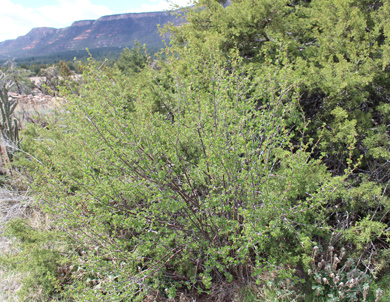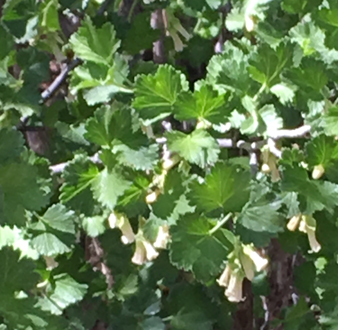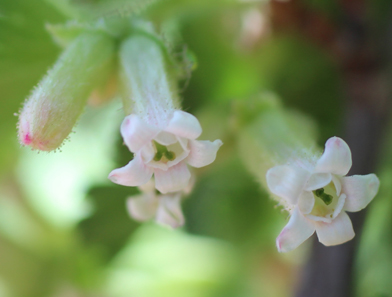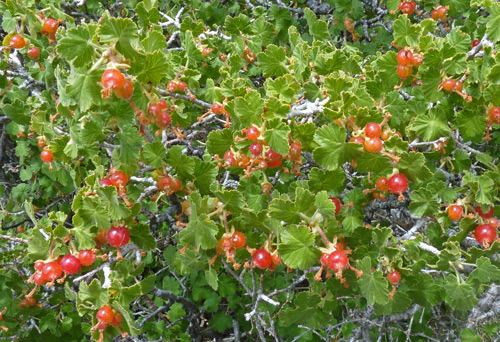
1. Two shrubs at #9 under Pinion pine (N35D33'02.237 X W105D41'22.878)
2. Shrub at #9 close to #10 (N35D33'01.290 X W105D41'22.248)
Flowers first observed: 4/10/17
The Plant

The Leaves w/Flowers

Flowers

Fruit
Distribution
"Found on rocky slopes or cliffs in open forests and shrublands, from 300-13,000 ft (91-3962 m); flowers April-August." (SEINet)
Description
"Distribution: Height of this deciduous shrub is to 3 ft. (1m); branches crooked, smooth, red-brown, spineless; leaves alternate, simple, fragrant, sticky, palmately veined, shallowly 3- to 5-lobed, the lobes toothed, leaves 0.5 to 1.5 in. (1-4cm) wide, leaf length and width about the same, leaves orbicular in outline; flowers cream-colored or pink, perfect, borne in racemes; fruit a red or orange-red berry, borne singly or in small clusters. Distribution: Widely scattered over NM, southern AZ to CA, dry pine forests of western OK, throughout CO and UT, to Canada. Habitat: Dry pine forest and gulches at elevations of 3,500 to 9,000 ft. (1,100 to 2,700m)." (Carter & Stevens 135-6)
Ethnobotanical Uses
Food:
"--- Native Americans ate the berries fresh or dried, mixed with bison meat in pemmican, and also used them to make an intoxicating beverage (the synonym for this species is Ribes inebrians, or 'inebriating currant'). The flowers of Wax Currant are also edible. (Carter & Stevens 135)
Medicine:
"--- Hopis used the berries to relieve stomach aches." (Carter & Stevens 135)
"--- Okanagan-Coville Eye Medicine Infusion of inner bark used to wash sore eyes. Shoshoni Emetic Fruit used as an emetic. Thompson Antidiarrheal Berries used for diarrhea. Pediatric Aid and Strengthener Decoction of branches with many other branches used to wash babies to make them strong." (Moerman 476)
"Decoction of bark used as a medicine for gastrointestinal complaints, eye medicine, and tonic." (SEINet)
Other Uses:
"The twigs and leaves of Wax Currant can be used for yellow, brown, gold and olive green dyes." (Carter & Stevens 136)
"Along with sumac, mountain-mahogany, and oak, the stout branches from currant bushes were one of the favored hardwoods for manufacturing both bows and arrows.---" (Dunmire and Tierney 133)
"Okanaghan-Coville Season Indicator First plant to sprout green leaves in the spring." (Dunmire and Tierney 133)
Internet Links
